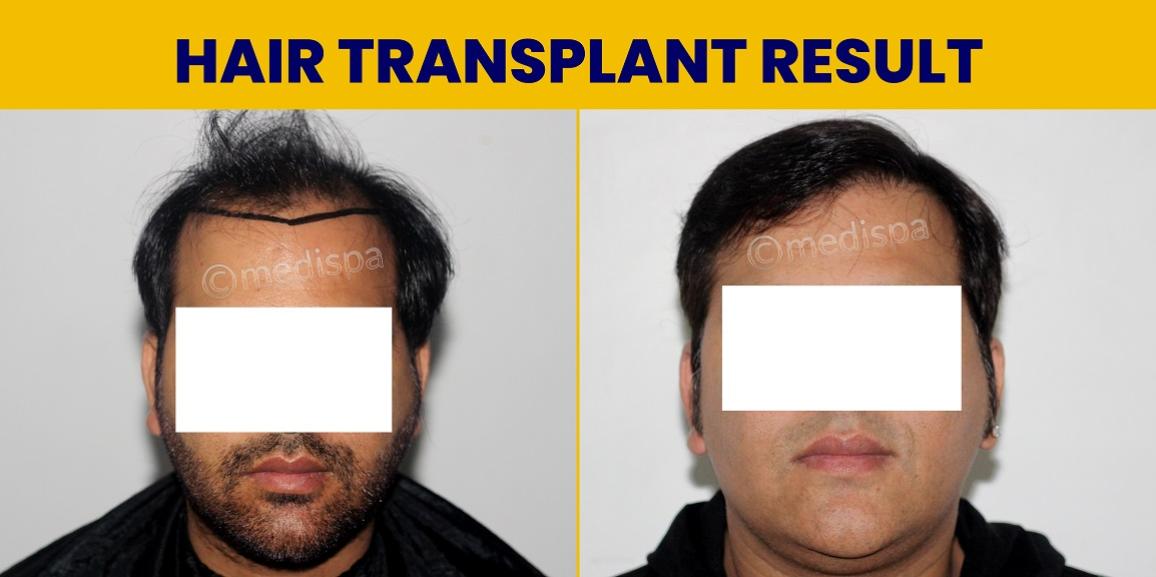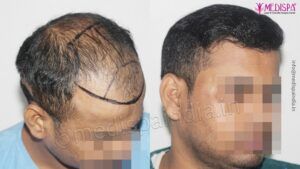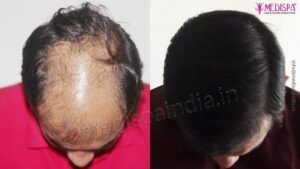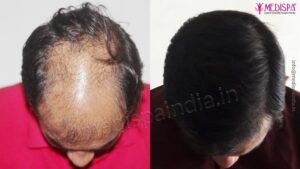
Hair transplantation is a surgical method that entails relocating hair follicles from a designated donor site to the area experiencing hair loss. It is essential to clarify that this procedure is frequently misinterpreted as a regenerative treatment capable of restoring lost hair follicles. In truth, hair transplantation is fundamentally a restorative technique designed to enhance coverage in bald regions by transferring hair follicles from the donor site.
This cosmetic intervention acts as a vital solution for those facing hair loss, granting them an opportunity to rejuvenate their hair in areas of baldness. Nevertheless, it is important to recognize that hair transplantation cannot entirely revert complete baldness to its original condition. Instead, it can replace roughly 30% of the hair follicles, which can still result in favorable outcomes.
The limitation arises from the necessity for each hair follicle to have its own distinct supply of nutrients, which cannot be adequately provided to all follicles during the transplantation process. Consequently, achieving full restoration of hair remains unattainable.
Preferred treatment for hair loss
The preferred approach for addressing hair loss is through hair transplant treatment. While there are numerous options available for managing this condition, hair transplant is distinguished as the most effective long-term solution. Many individuals resort to self-treatment methods involving various lotions, shampoos, and conditioners; however, the efficacy of these products is often questionable. Alternative solutions, such as wigs, suction wigs, hair extensions, or strategic parting techniques, may provide a temporary disguise for baldness, yet they can be cumbersome and are not permanent fixes. Medications like Minoxidil and finasteride can help to slow hair loss and encourage regrowth, but these too offer only short-term benefits. In contrast, hair transplant stands out as the only method that delivers a durable resolution to hair loss.
Hair transplant and its techniques
Hair transplantation is a minimally invasive cosmetic surgical procedure that entails relocating hair follicles from a donor site with a higher density to the balding areas of the recipient. Although the procedure may seem straightforward, it necessitates a significant degree of technical proficiency and expertise for successful execution.
The most crucial element of hair transplantation is the graft harvesting process, which influences the overall technique employed. There are two primary methods utilized:
- FUT hair transplant (Follicular Unit Transplantation or strip technique): This method involves excising a narrow strip of scalp tissue, which is subsequently dissected to extract individual grafts. These grafts are meticulously implanted in the targeted bald regions. Each phase of this procedure is conducted under high magnification, ensuring accurate placement and reducing the likelihood of graft damage.
- FUE hair transplant (Follicular Unit Extraction): This approach involves the extraction of individual hair follicles through a punching technique on the scalp. The harvested follicles are then transplanted into the balding areas of the recipient.
It is essential to recognize that both techniques demand the expertise and dexterity of a qualified professional to achieve the best possible outcomes.
Is hair transplant a procedure that yields permanent results?
Certainly, it does! The widespread appeal of this procedure stems from its ability to deliver enduring and permanent outcomes. Hair follicles in the frontal and vertex regions are sensitive to DHT, leading to thinning or miniaturization due to hair loss. Conversely, the hair follicles located in the occipital area (the back and sides of the head) are resistant to DHT and do not undergo hair loss, as they are not influenced by hormonal changes. Since the genetic characteristics of these resilient hair follicles reside within the follicle itself rather than on the scalp, they can be relocated to any area and will remain there indefinitely.
While the procedure offers lasting results, it does not prevent the ongoing loss of existing natural hair. Consequently, as hair loss is a progressive condition, it may continue even after a hair transplant, although it is unlikely to affect the transplanted hairs.
Dr. Suneet Soni, a renowned hair transplant surgeon in India (MCh Plastic Surgeon), is known for delivering exceptional hair transplant results. He offers competitive pricing for hair transplant in India and is recognized as one of the leading experts in the field. His surgical skill and keen aesthetic judgment allow him to achieve results that are both enduring and visually appealing. Dr. Soni has received accolades at numerous national and international conferences for his contributions to hair transplantation and research.
How one can be sure of permanent results?
Patients have started to question the reliability of the procedure following exposure to both favorable and unfavorable accounts of hair transplants from various individuals, particularly as the incidence of unsuccessful outcomes appears to be increasing alongside the procedure’s rising popularity.
To enhance the likelihood of achieving permanent and natural-looking hair transplant results, consider the following recommendations:
- Selecting the appropriate surgeon: It is crucial to investigate the qualifications of the surgeon, as their training and experience significantly influence the quality of the results. Whenever feasible, opt for a licensed and board-certified hair transplant surgeon. Reviewing testimonials and galleries of previous patients can provide insight into the surgeon’s expertise. Furthermore, since collaboration is vital for the success of hair transplants, it is important to assess the experience of the supporting staff as well.
- The technique utilized: Selecting the appropriate technique in alignment with the patients’ requirements necessitates prudent decision-making and the application of knowledge. The chosen method is influenced by factors such as the patient’s age and gender, the extent of hair loss, the quantity of grafts necessary to address the baldness, and the type and density of hair in the donor area.
Each procedure requires exceptional skill and should be performed judiciously by experienced surgeons. The Follicular Unit Transplantation (FUT) technique is more intricate and demands greater expertise, yet it offers numerous advantages compared to Follicular Unit Extraction (FUE). While FUE hair transplantation is relatively straightforward, it requires precision and is sensitive to technique, as improper execution may lead to excessive harvesting of follicular grafts or an increased rate of hair follicle damage.
- Post-transplant care: Alongside the skills of a proficient surgeon, the patient is required to exert considerable effort. To ensure lasting results, it is crucial to adhere strictly to post-transplant protocols. The duration of post-transplant care is limited to a maximum of 10 days, as this procedure is less invasive.
- The tools utilized: Advancements in technology and innovation are leveraged to enhance outcomes across all fields, including hair transplant surgery. Selecting a clinic that utilizes state-of-the-art equipment of the highest quality and conducts each procedure under significant magnification is vital.







